- 1. What is the Japanese Tea Ceremony?
- 2. History of the Tea Ceremony: How Did It Begin?
- 3. The Four Principles of the Tea Ceremony
- 4. The Tea Ceremony in Practice: Rituals and Etiquette
- 5. The Philosophy of the Tea Ceremony: “Ichi-go Ichi-e” and Wabi-Sabi
- 6. The Tea Ceremony in Modern Times and Its Global Influence
- 7. Conclusion: Why Learn About the Tea Ceremony?
1. What is the Japanese Tea Ceremony?

The Japanese tea ceremony, or “sadō” (茶道), is more than just preparing and drinking tea—it is a deeply rooted cultural practice that embodies aesthetics and philosophy.
At the heart of tea ceremony lies the concept of “wabi-sabi” (侘び寂び), which finds beauty in imperfection and simplicity. Another essential philosophy is “ichi-go ichi-e” (一期一会), meaning “one time, one meeting.” This idea emphasizes that each moment is unique and should be cherished, a concept that continues to influence Japanese culture today.
2. History of the Tea Ceremony: How Did It Begin?

(1) The Introduction of Tea from China
Tea was introduced to Japan in the early Heian period (794–1185) by envoys who traveled to China. However, it was mainly consumed by the aristocracy. During the Kamakura period (1185–1333), the Zen monk Eisai (栄西) brought powdered green tea (matcha) from China, and tea culture spread among the samurai class.
(2) The Development of Tea Culture in the Muromachi Period
Under the patronage of the Ashikaga shogunate, Murata Jukō (村田珠光) developed the foundations of “wabi-cha” (わび茶), which emphasized simplicity and tranquility in tea preparation.
(3) The Perfection of Wabi-cha by Sen no Rikyū
During the Sengoku period (1467–1615), the great tea master Sen no Rikyū (千利休) revolutionized the tea ceremony by embracing simplicity and minimalism. Unlike the extravagant tea gatherings of the past, Rikyū promoted austere tea rooms and humble utensils, emphasizing the beauty of imperfection.
★ The Story of Sen no Rikyū and Toyotomi Hideyoshi (There Are Multiple Theories)
Toyotomi Hideyoshi (豊臣秀吉), the powerful ruler of Japan, preferred luxurious tea settings, such as his famous golden tea room covered in gold leaf. In contrast, Sen no Rikyū upheld the principle of wabi-cha, focusing on simplicity.
This ideological clash is said to have led to Rikyū’s forced seppuku (ritual suicide) under Hideyoshi’s orders. However, there are various theories about why Hideyoshi ordered Rikyū’s death. Some suggest it was due to political conflicts rather than just differences in tea philosophy.
3. The Four Principles of the Tea Ceremony
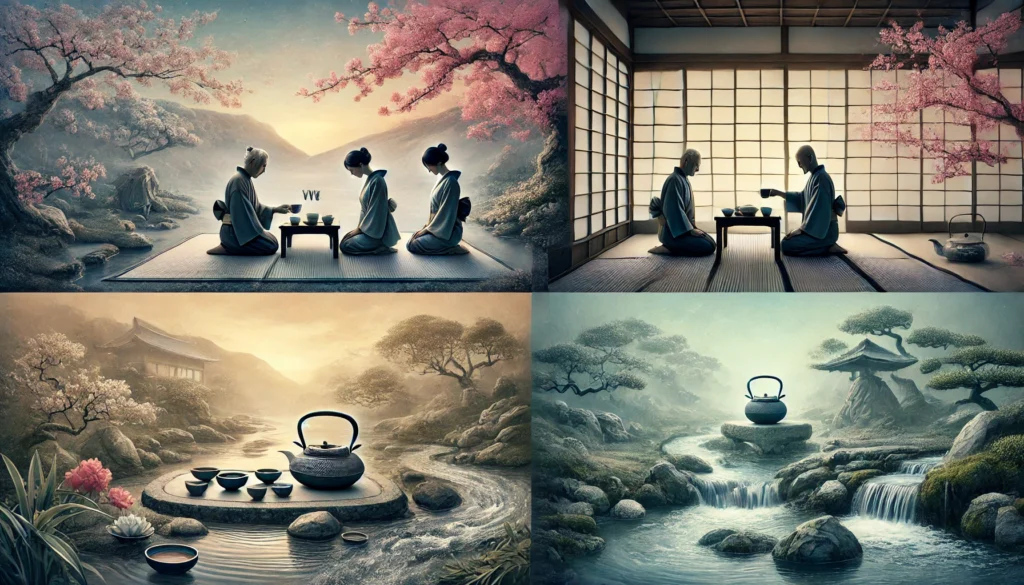
Sen no Rikyū summarized the spirit of the tea ceremony into four principles:
• Wa (和) – Harmony: Value harmony between people and nature.
• Kei (敬) – Respect: Show deep respect to others.
• Sei (清) – Purity: Maintain cleanliness in mind, body, and surroundings.
• Jaku (寂) – Tranquility: Achieve inner peace and enlightenment through tea.
These principles extend beyond the tea room and continue to influence Japanese etiquette and values today.
4. The Tea Ceremony in Practice: Rituals and Etiquette
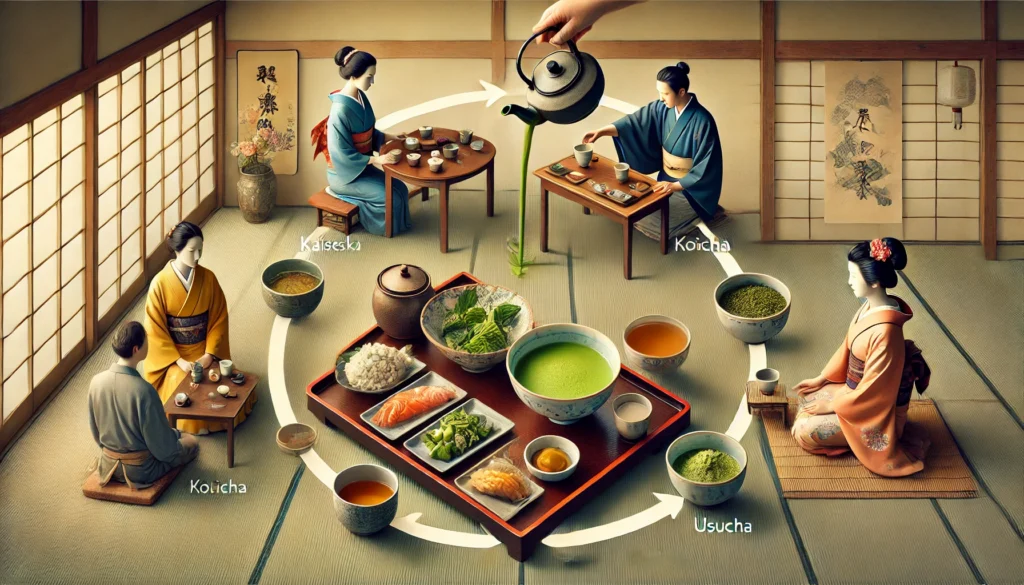
The tea ceremony is more than just drinking tea; it is a ritual that cultivates mindfulness and appreciation.
Steps of a Tea Gathering
1. Kaiseki (懐石) – A light meal is served.
2. Koicha (濃茶) – Thick tea is prepared and shared among guests.
3. Usucha (薄茶) – A lighter tea is served, accompanied by conversation.
The Architecture of the Tea Room
One unique feature of the tea room is the nijiriguchi (にじり口), a small entrance that requires guests to bow as they enter. This symbolizes equality, as even high-ranking samurai had to humble themselves in the tea room.
★ The Story of the Nijiriguchi (There Are Multiple Theories)
There is a famous story about Oda Nobunaga (織田信長), a powerful warlord. During a tea gathering, he initially refused to bow and enter through the nijiriguchi. However, Sen no Rikyū is said to have insisted that even samurai must enter humbly. Eventually, Nobunaga respected this rule and participated in the tea ceremony.
However, this story is one of many interpretations, and the actual details remain uncertain.
5. The Philosophy of the Tea Ceremony: “Ichi-go Ichi-e” and Wabi-Sabi
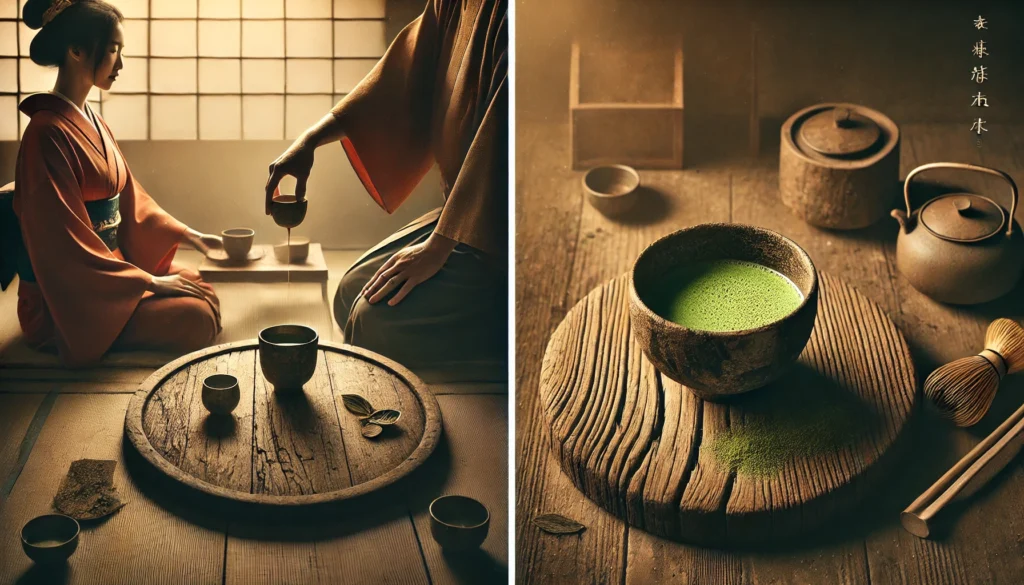
• “Ichi-go Ichi-e” (一期一会): Every tea gathering is a once-in-a-lifetime event and should be cherished.
• “Wabi-sabi” (侘び寂び): Finding beauty in imperfection, transience, and simplicity.
For example, cracks in a tea bowl are often considered part of its charm rather than flaws. This aesthetic reflects the Japanese appreciation for aging and impermanence.
6. The Tea Ceremony in Modern Times and Its Global Influence
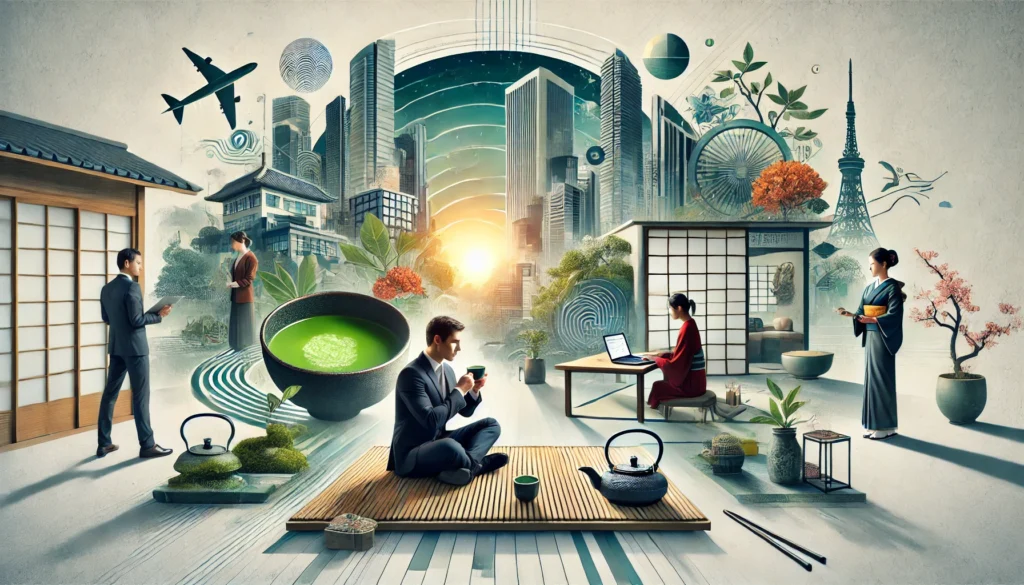
• The Tea Ceremony in Japan Today
The tea ceremony is still practiced in schools, clubs, and cultural institutions. Some businesses even use tea ceremony principles for corporate training, as it teaches mindfulness and discipline.
• The Tea Ceremony’s Popularity Abroad
Recently, the tea ceremony has gained popularity in France, the U.S., and other countries. Many people find its minimalist rituals and meditative aspects similar to mindfulness practices.
★ The Connection Between the Tea Ceremony and Steve Jobs
Steve Jobs, the co-founder of Apple, was deeply influenced by Japanese Zen and wabi-sabi aesthetics. His emphasis on simple yet elegant design aligns with the philosophy of the tea ceremony.
7. Conclusion: Why Learn About the Tea Ceremony?
• The tea ceremony embodies Japanese aesthetics and philosophy.
• It was practiced not only by monks and artists but also by samurai and leaders.
• The concept of “ichi-go ichi-e” is still relevant in today’s world.
For visitors to Japan, experiencing a real tea ceremony is a great way to connect with Japanese culture. Many places in Kyoto and Tokyo offer tea ceremony experiences for tourists. If you ever get the chance, be sure to try it!
Recommended Articles



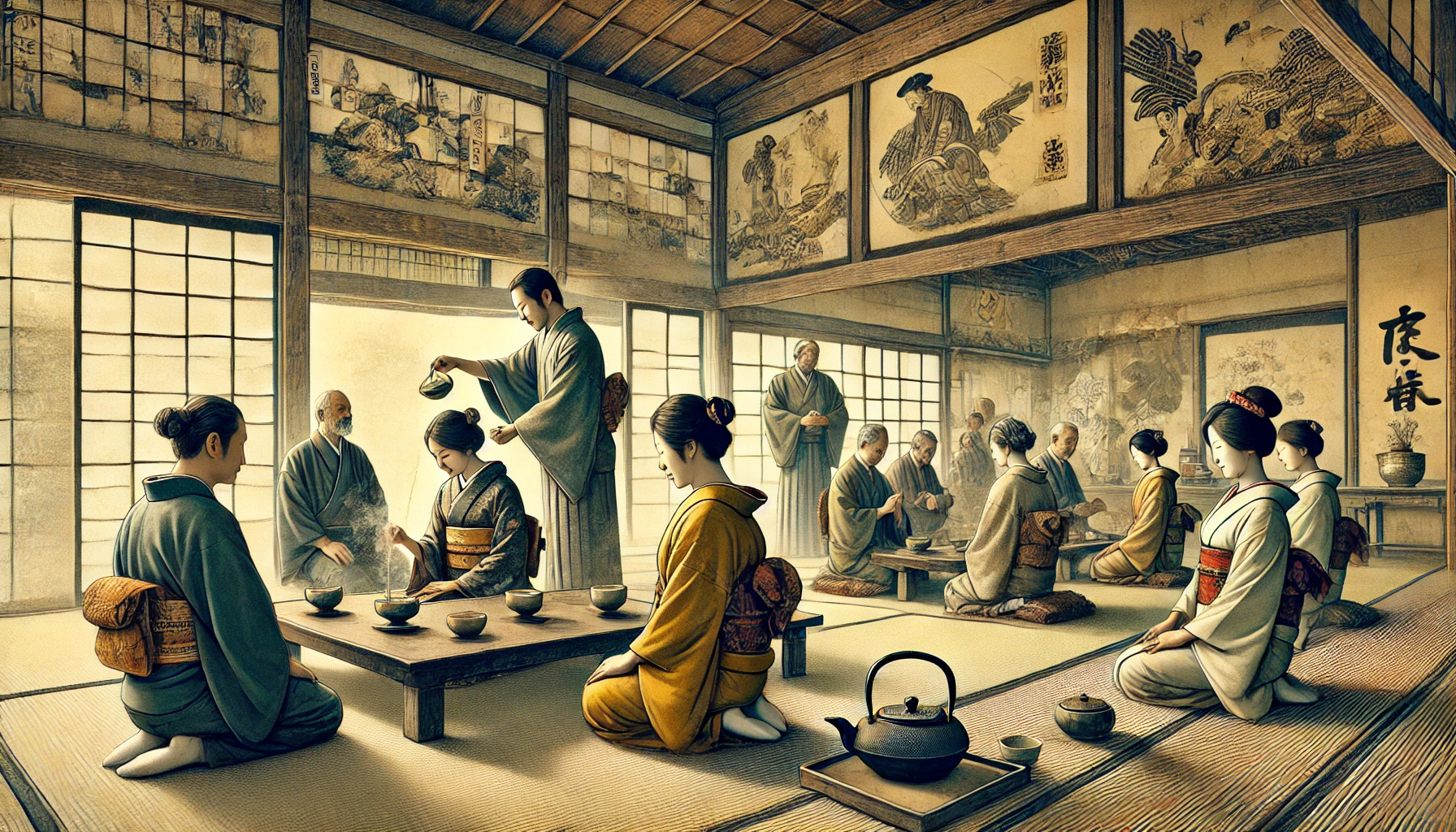


Comments